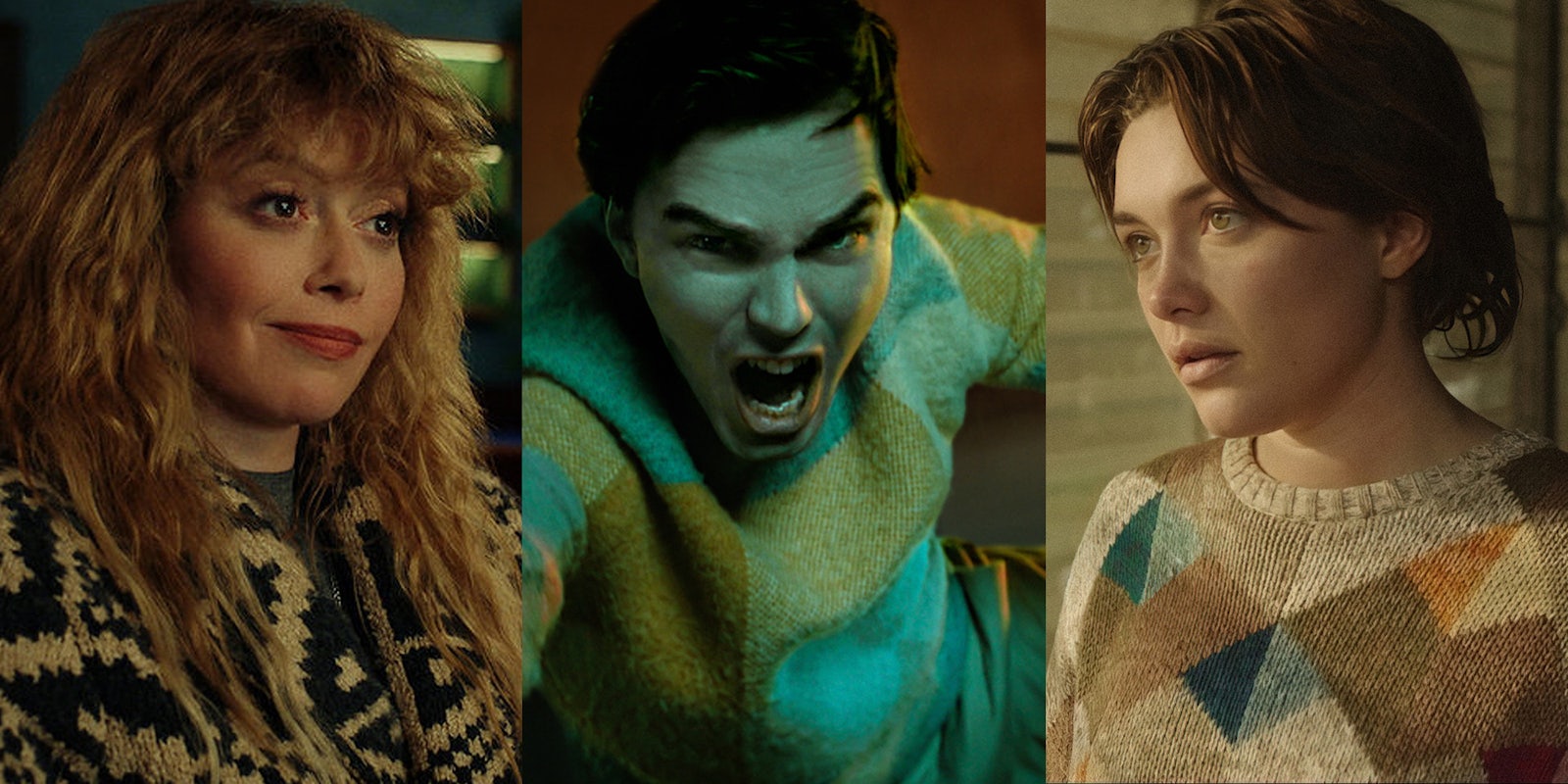Warning: This article contains spoilers.
Over the past few months, a number of projects that have very little to do with each other made their debut. They differ in tone, visuals, costuming, and what they’re trying to accomplish. None of them share any of the same A-list cast members at the helm.
Yet, as each of them came out earlier this year, they all managed to pull off the same character trick of implementing a cozy addition to serve as a visual harbinger of change. Seriously, want to make it apparent that your character is about to undergo some kind of internal transformation? Put them in a geometric sweater.
In this case, geometric is more of a catch-all term in reference to the shapes themselves than any specific shape: The sweaters that feature in Zach Braff’s melodrama A Good Person, Chris McKay’s horror-comedy Renfield, and Peacock’s howcatchem Poker Face, like everything else about them, look nothing alike. But between the blocks, triangles, or more angular shapes that adorn these sweaters and the vast array of colors—ranging from two shades and splotches of color among a muted tone to a literal pastel rainbow display—give us an indication that the character is either about to or just crossed some kind of precipice.

While the sweaters themselves aren’t bringing the characters to the point of no return (for better and for worse), it’s a visual storytelling choice just as much as putting a character in a profession-appropriate fit or a piece that signifies a difference in class or wealth. (And this isn’t even the first time a sweater in a Rian Johnson project caught the internet’s eye.)
A pastel rainbow
It’s most evident in Renfield, which pulled off the incredibly delightful move of having not one but two characters mention the sweater in question. This spinoff of Bram Stoker’s Dracula frames Dracula (Nic Cage going Full Cage) as the abusive boss of his familiar Robert Montague Renfield (Nicholas Hoult). Having settled in New Orleans, the latest attempt for the duo to start over after Dracula ruined it all yet again, Renfield stumbles upon a support group for people in codependent relationships. While he’s initially there to look for victims to deliver to Dracula, he later targets the people causing his new group of friends so much strife.
Eventually, Renfield realizes that he is in a toxic relationship. And he makes great strives to improve his life. He reads self-help books and decorates his new apartment with bright colors to be the polar opposite of the decrepit and abandoned hospital that Dracula calls home. He cleans up his appearance—he looks like he’s gotten some sleep lately, and his hair is no longer hanging in his face—and to make the transformation complete, he goes on a shopping montage set to Lizzo to buy himself a new wardrobe and ends up with several bags of new clothes in Old Navy bags. (Product placement!)
But the pièce de résistance, courtesy of Renfield costume designer Lisa Lovaas, is a pastel, blocked Polo Ralph Lauren pullover that, if you wanted to communicate that you were no longer a sad goth boy and you finally got your life together, would certainly do the job to most strangers but probably not the audience (who knows better).
To the people who’ve met Renfield in the wild, it’s a jarring change. Rebecca (Awkwafina), the cop he saved from an attack by New Orleans’ premier crime family, might be surprised by the sudden wardrobe change, but she doesn’t want him to think her surprise is a bad thing.
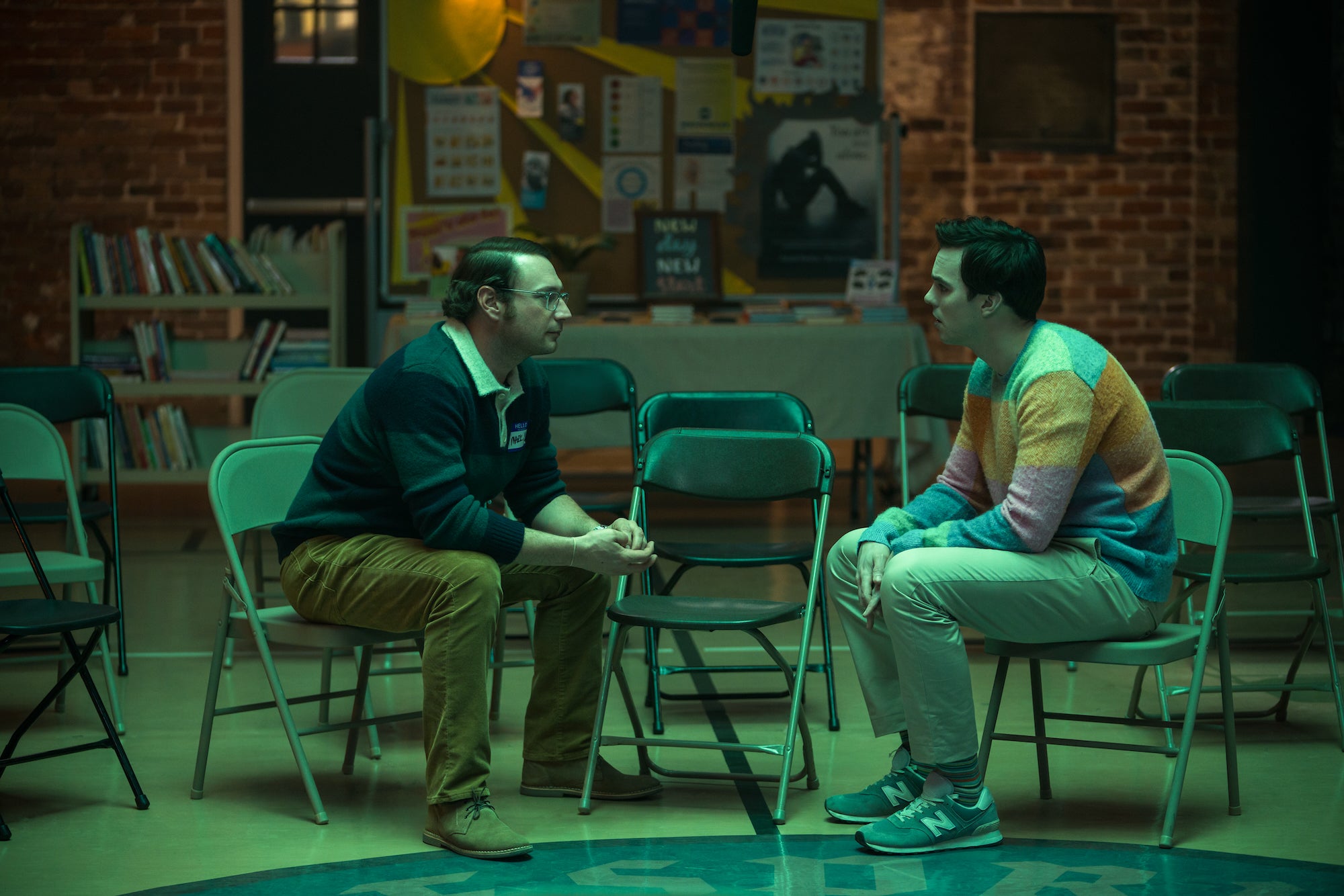
“I really like your sweater!” she tells Renfield.
“Thanks, I got it at Macy’s!” Renfield replied with the kind of immediate reflex you might get from someone who, after getting complimented on a dress, feels the need to add that it has pockets.
However, when Dracula sees Renfield in his pastel glory, he’s more antagonistic. In a voice dripping with sarcasm, Dracula assesses Renfield’s attire and ponders that Renfield can’t keep others off of him because of it. Because we’re well aware of Dracula’s emotionally abusive tactics, the negging insinuates that Renfield’s new sweater is an abomination to fashion. (Dracula, we should note, is wrong.)
As of press time, you can only purchase Renfield’s sweater on reseller sites like eBay. Earlier this month, a redditor reported that it was still available at Macy’s (albeit in limited numbers). Macy’s did not reply to an emailed request for comment to verify if the retailer sold the sweater at one point.
“If I ever get ahold of the Renfield rainbow sweater it’s over for all of you,” one person wrote on Tumblr, where it’s gotten lots of love.
An oversized pullover
For Allison (Florence Pugh), the protagonist in A Good Person, her sweater—an oversized pullover adorned with pink, yellow, and blue triangles among neutral shapes in brown and beige from costume designer Tere Duncan—arrives right after she hits her first rock bottom.
One year after getting into a car crash that killed her fiancé Nathan’s (Chinaza Uche) sister (Nichelle Hines) and brother-in-law (Toby Onwumere), Allison doesn’t have a job and can barely get out of bed, is addicted to painkillers, broke up with her fiancé, moved back home, and gave herself a Dramatic Haircut. No doctor in her small New Jersey town will fill another prescription to help with her pain, nor can she afford to pay the drug dealers in her town for a hit. Through her addiction, she became the person she once mocked in high school, and with no health insurance and unable to afford rehab, she tries out a support group for addicts inside of a nondescript church. (Both drug addicts and alcoholics are represented among its members.)
Having not cared about her appearance to this point, preferring to stay in her pajamas all day—with the exception of a failed attempt to get an old colleague to get her some painkillers—Allison pairs a sweater that’s entirely too big for her with mismatched leggings. Essentially, she might not look exactly put together (and she later learns her the other people in the group can tell when she attends the meetings high), but hell, she showed up.
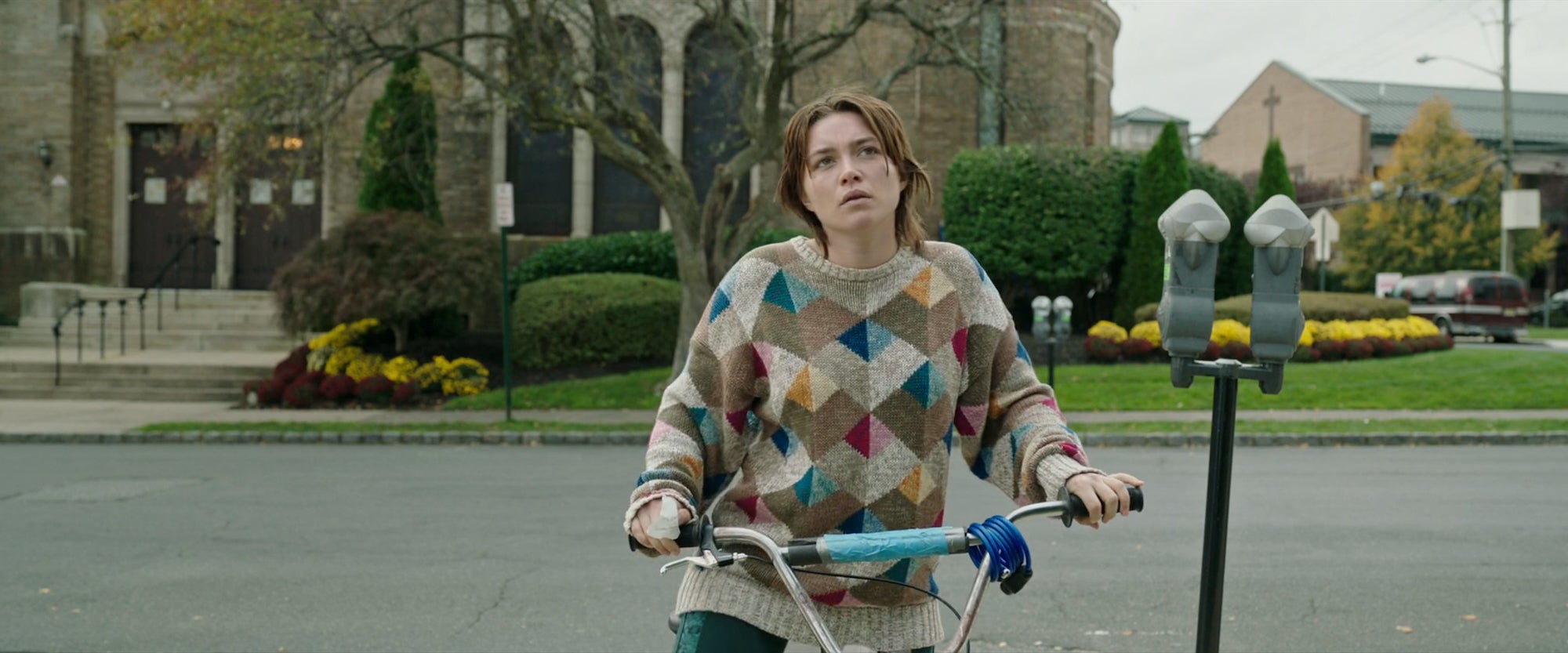
And when she enters her first meeting, she sees Daniel (Morgan Freeman), her ex-fiancé’s estranged father, who attends the meetings because he’s an alcoholic. She bolts after seeing him, insisting that she can find a different meeting; she’s aware he blames her for his daughter’s death. Knowing how hard it can be to attend the first meeting, Daniel insists that she stay. From there, they form a fragile friendship despite the baggage that clearly resides in their past.
An iconic cardigan
Charlie Cale (Natasha Lyonne), Poker Face’s wisecracking “human lie detector,” probably changes the least as a character throughout the show’s first season. Apart from the premiere and the last two episodes, Poker Face is designed as a case-of-the-week show where in each episode, Charlie arrives somewhere and inexplicably finds herself in a position to solve a crime or right a wrong. Hypothetically, you should be able to dive right into Poker Face without needing several backstory episodes. But for Charlie, it starts off with a major life change—a physical one.
The show’s pilot, “Dead Man’s Hand,” introduces us to Charlie, who works at Sterling Frost Sr.’s (Ron Perlman) casino in Laughlin, Nevada as a cocktail waitress after Sterling Sr. got her blackballed from the poker tables for using her abilities. Charlie’s the kind of easy-going person who doesn’t hold a grudge given that Sterling Sr. could’ve gotten her killed for it, and he instead gave her a job. She’s also best friends with Natalie (Dascha Polanco), a maid who works at Sterling Sr.’s adjoining hotel.
Apart from a brief scene inside Charlie’s trailer, our first look at Poker Face’s human lie detector is a sweater, courtesy of costume designer Trayce Gigi Field. Dressed in a T-shirt, shorts, a trucker hat, sunglasses, and clothed boots, she puts on a black and tan geometric cardigan draped over a plastic chair and opens up a can of Coors Light. Well before she’s recruited into helping Sterling Jr. (Adrien Brody), the casino’s manager—and Sterling Sr.’s adult failson—into swindling a high-profile patron during a private and illegal poker match, the mismatched fashion sets Charlie up as someone as cool as a cucumber. She ditches the hat and sunglasses when Sterling Jr. pitches his scheme to her in his office, but the rest of the outfit remains.
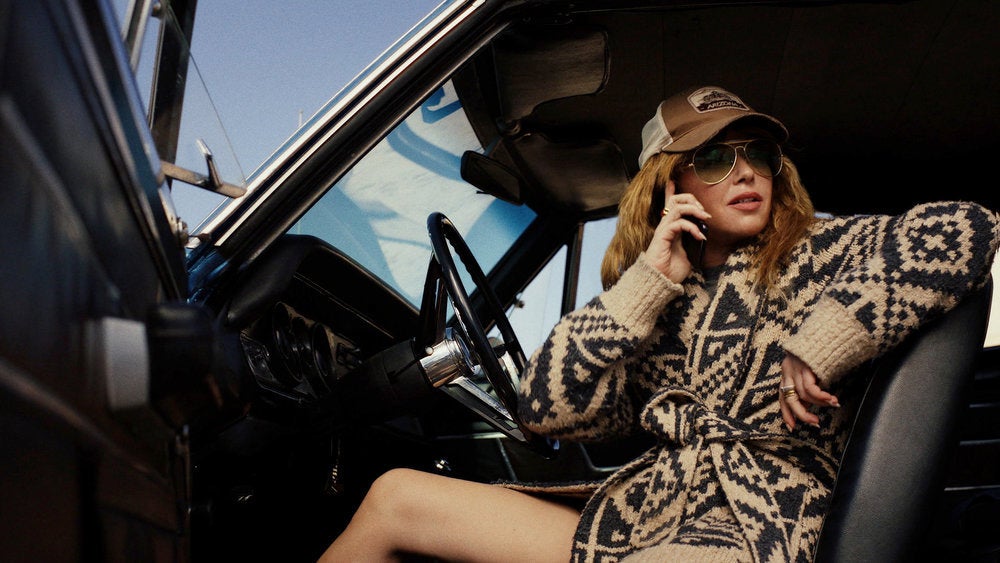
Charlie is, simply put, at a crossroads, and unbeknownst to her, it’s all about to go to hell. Soon after this meeting, Cliff LeBrand (Benjamin Bratt), the casino’s head of security, will murder Natalie and her shitty husband to cover up the child pornography she discovered on the computer of the same high roller Sterling Jr. wants to fleece.
She could let it all go and make bank on the high roller, but she can’t. Charlie’s attempt to discover what happened to Natalie will uncover not just that but also unravel Sterling Jr.’s scheme (which jeopardizes the casino’s reputation), leading him to end his own life. Naturally, Sterling Sr. blames Charlie for his son’s death, sending her on the run for over a year as she solves crimes and rights perceived wrongs, with Cliff on her tail.
In interviews, Field has spoken about the thrift-like nature of Charlie’s wardrobe, a necessity for Charlie’s constant road travels. But the key inspiration for her cardigan, which is from Banana Republic, was more about homaging (or stealing, as Lyonne put it) an incredibly famous cardigan than the specificity of the design.
“Trayce was so great at realizing the sweet spot between the oversized sweater we stole from The Dude in The Big Lebowski to her more standard uniform with added flair, like sunglasses and baseball hats from trucker stops [while we were] on the road,” Lyonne told W Magazine.
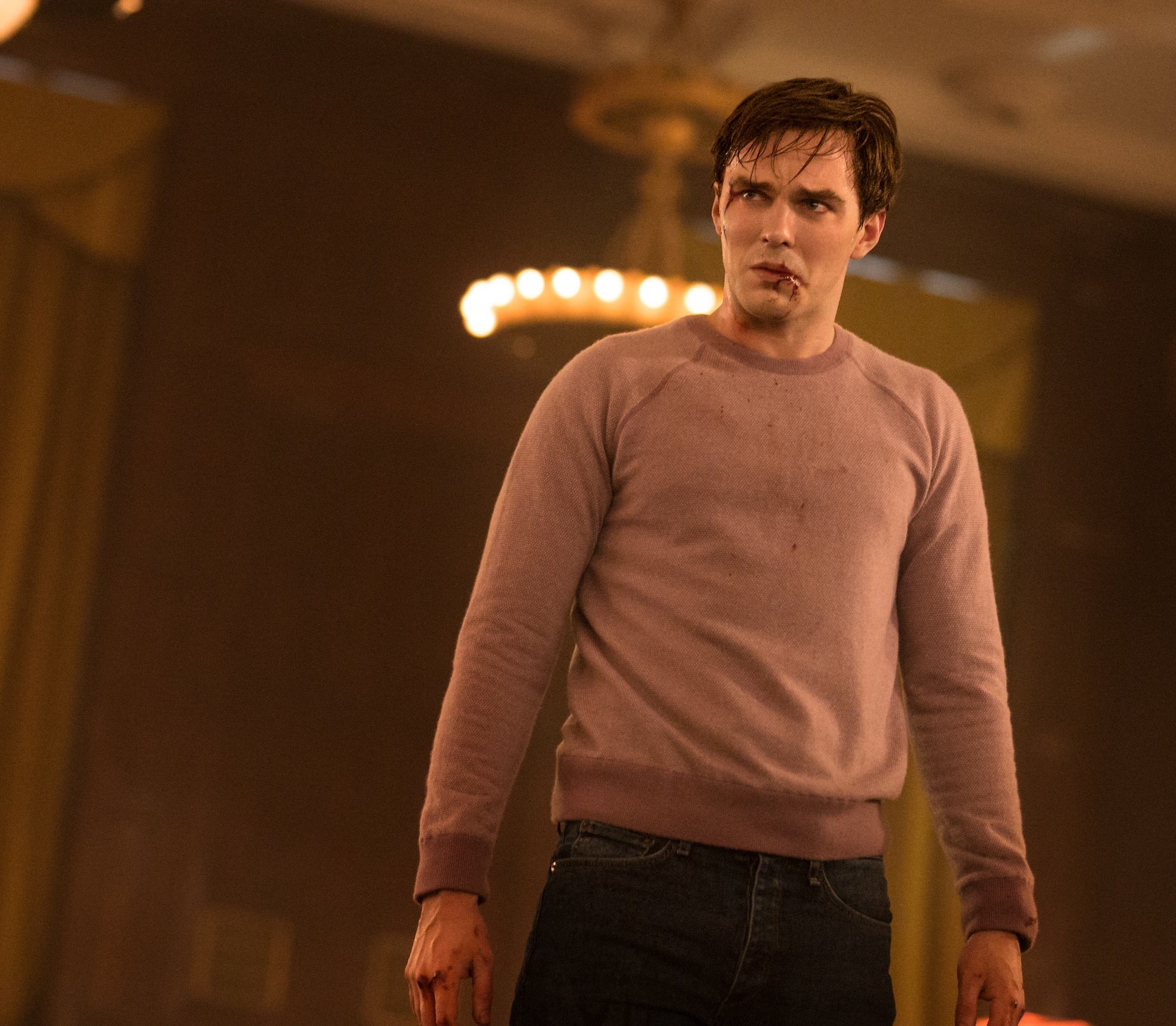
Allison and Renfield’s respective crossroads are equally distinct, though their transformations are internal. Renfield is attempting to break free from his toxic boss, while Allison is trying to face her addiction. But they both face complications and setbacks: Dracula tries to keep Renfield caged into his subservient existence, while Allison relapses on painkillers when things become hard. But they both persevere, and their choices are solidified with, of all things, solid outfits.
In Renfield, Renfield changes out of that sweater for the final confrontation of Dracula and the Lobo crime family and wears a reddish pink sweatshirt instead, which gets bloodied the more cronies and newly formed familiars he takes on before he can take on his ex-boss. The sweatshirt is also light enough for the copious amounts of blood spilled to be even more visible.
Allison’s wardrobe evolves with her; as she improves herself, so do her clothes. By the movie’s end, Allison has been clean for a year when she learns Daniel has died. She assists Nathan with a gathering after the funeral, where she’s wearing a solid green dress (a vast contrast to the black and somber hues of her fellow mourners). But a letter to Allison is tucked away in Daniel’s basement, where his train set and the model town are situated. Her initial choice to better herself by going to that first meeting—sweater and all—is immortalized in a miniature figure, forever destined to reside in the town where everything goes as it should.
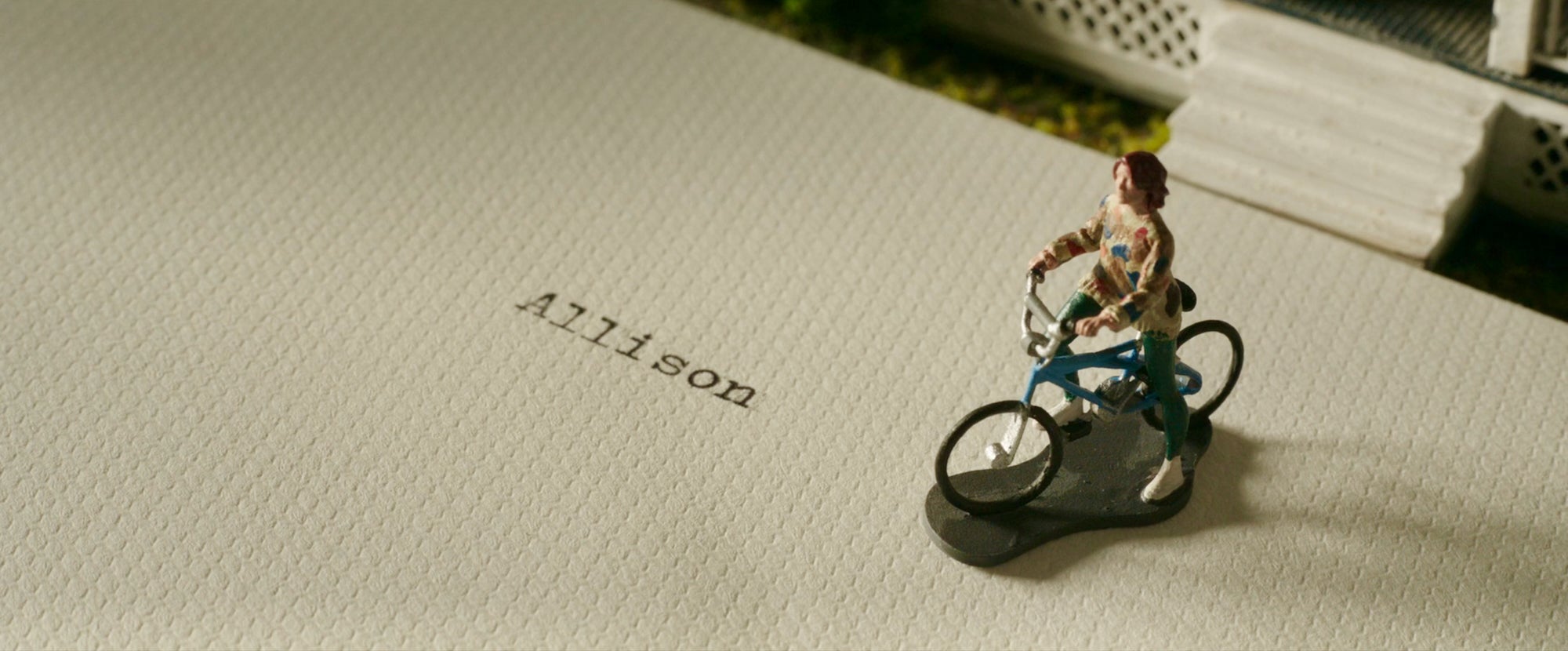
In contrast, Charlie’s choice in Poker Face is pretty black and white. Her cardigan has the least colors of the three, and she even gets a new sweater as she approaches another crossroads. While the most prominent outfit in the season 1 finale, “The Hook,” is the floral Dolce & Gabbana dress she’s given to wear when going face-to-face with Sterling Sr., she’s wearing another geometric cardigan—this time, Aztec-inspired with several colors in the mix.
This time, the destruction that lay ahead is even more personal when Cliff tries to frame Charlie for Sterling Sr.’s murder. But her successful attempt to clear her name sends her back on the run after refusing to work for a rival casino owner (Rhea Perlman), setting us up for another season of Charlie Cale’s misadventures.
If season 1 was any indication, we will see several more fits the next time we hit the road with Charlie. And maybe another sweater or two in the mix because her story’s far from over.


